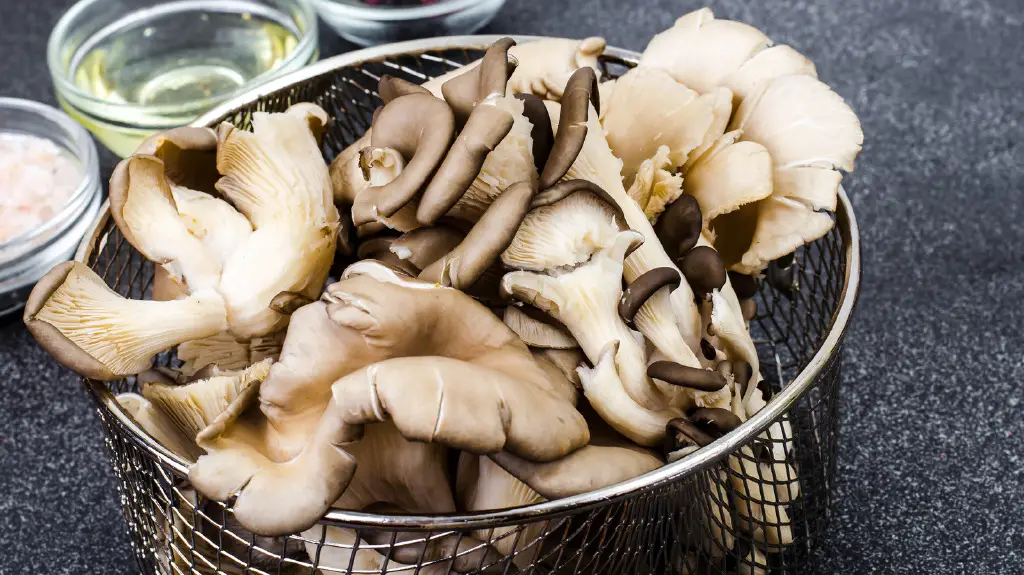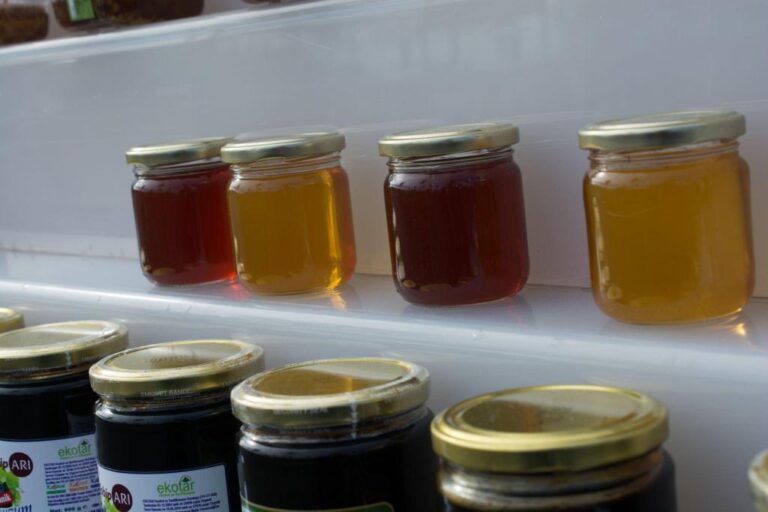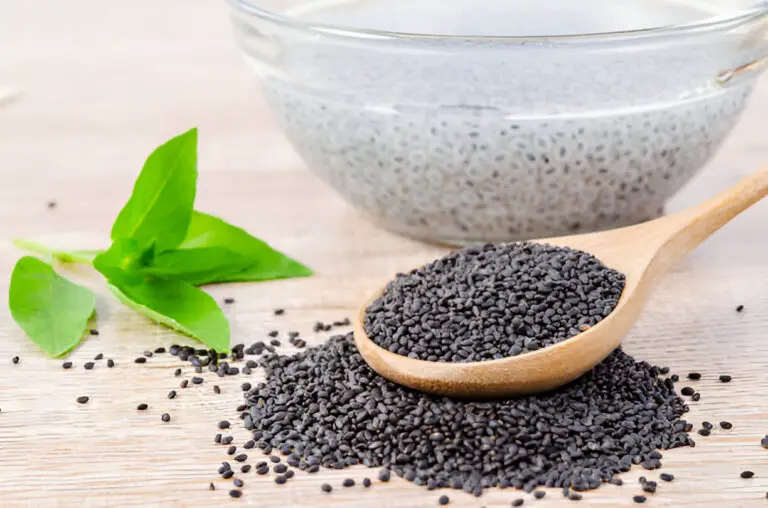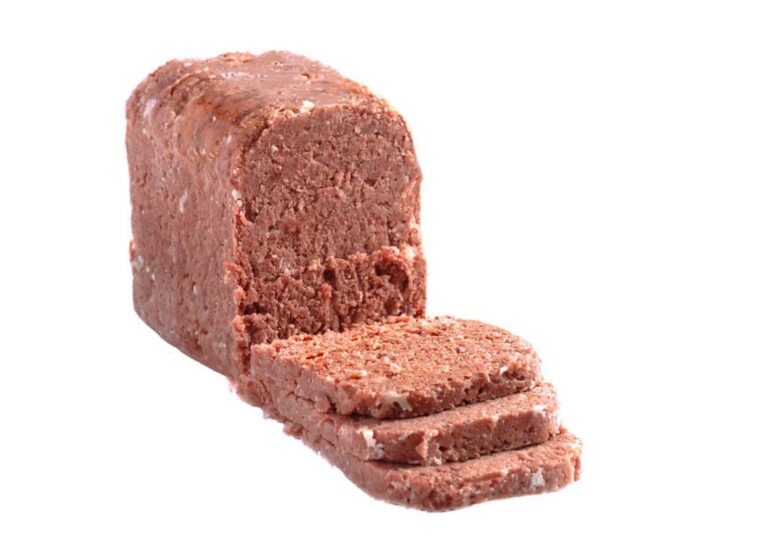Are Mushrooms Supposed to Be Slimy? Is It Normal?

We often have questions about mushrooms, those mysterious fungi that grow in the dark of our forests and show up on our dinner plates. One of the most perplexing mysteries in the world of mushrooms is their tendency to be, well, slimy. Are slimy mushrooms normal, or is there something to be concerned about when we find them in our dishes?
We will peel back the layers of the slimy mushroom mystery as we look into the mysterious world of mushrooms. We’ll dive into the texture variations among different mushroom varieties. In addition to that, we will investigate the signs of spoilage and uncover the secrets of transforming slimy mushrooms into culinary delights.
So, let’s embark on this savory journey and decode the slippery allure of mushrooms!
Are Mushrooms Supposed to Be Slimy?

Mushrooms are a versatile and delicious addition to many dishes, but have you ever wondered if they are supposed to be slimy? The answer is not as straightforward as you may think. While some mushrooms can naturally have a slightly slimy texture, it isn’t always an indication of spoilage or contamination. In fact, sliminess can sometimes enhance the flavor and mouthfeel of certain mushroom varieties.
The sliminess that is sometimes found in mushrooms is due to their high water content. Mushrooms are made up of more than 90% water, which makes them prone to becoming slimy when cooked or stored for too long. This natural moisture also helps mushrooms retain their shape and juiciness when cooked.
While slime may not be appealing, mushrooms are not necessarily unhealthy or unsafe to eat.
To reduce the chances of encountering slimy mushrooms, there are a few things you can do. First, make sure to handle them gently and avoid bruising them before cooking. When storing mushrooms in the refrigerator, place them in a paper bag rather than plastic packaging. Doing so will allow for better airflow and prevent excess moisture buildup. Additionally, cooking your mushrooms over high heat will help evaporate any excess moisture and reduce their sliminess.
Edible Natural Slimy Mushrooms Varieties
Some naturally slimy mushrooms are not only edible but also prized for their unique culinary characteristics. Wood Ear and Jew’s Ear, for instance, are renowned for their slippery texture and are prominently featured in various Asian dishes, adding both flavor and visual appeal to culinary creations.
When prepared thoughtfully, these mushrooms can contribute a delightful chewy element to soups, stir-fries, and other Asian delicacies. In Chinese cuisine, Wood Ear mushrooms are often utilized in hot and sour soups, imparting a distinctive mouthfeel and absorbing the flavors of the broth, creating a harmonious blend of textures and tastes.
Similarly, Jew’s Ear mushrooms find their way into popular dishes such as salads and stir-fried vegetables, providing a pleasant contrast to the overall dish with their soft yet slightly crunchy consistency.
Embracing these naturally slimy mushrooms in your cooking endeavors can introduce a new dimension of taste and texture, offering a glimpse into the diverse and rich world of Asian culinary traditions.
What Causes Mushrooms to Become Slimy?
Mushrooms can sometimes take an unexpected turn and become slimy, leaving many of us wondering what causes this transformation. The slimy texture is often attributed to excess moisture or improper storage conditions.
When mushrooms are exposed to high humidity levels or stored in a closed container without proper air circulation, the excess moisture can create the perfect environment for bacterial growth. This bacteria breaks down the mushroom’s cell walls, resulting in a slimy texture.
Interestingly enough, it’s not just poor storage practices that contribute to sliminess; certain types of mushrooms are more prone to becoming slippery than others. For instance, shiitake mushrooms have a higher water content compared to other varieties like button or cremini mushrooms.
Consequently, they tend to become slimy more quickly when not handled with care. Older or overmatured mushrooms are also at risk of developing a slimy coating as their cell structure weakens with age.
While it may be discouraging to discover your once-pristine mushrooms have taken on an unappetizing appearance and texture, there’s no reason to let them go completely to waste.
If you notice some slime on your fresh mushrooms but they’re still firm and smell fresh (not foul), you can remove the affected areas before cooking them. Doing so ensures you still get that delicious mushroom flavor without compromising your dish’s overall quality.
| Read: Does Washing Mushrooms Make Them Slimy? |
Is It Normal for Mushrooms to be Slimy?
The sliminess of mushrooms can often be cause for concern, but is it normal? The short answer is – it depends. While some mushrooms naturally have a slimy texture, others may become slimy due to improper storage or decay.
Certain species of mushrooms, such as Enoki and Wood Ear mushrooms, are naturally slimy when fresh. This slime serves as a protective layer against moisture loss and aids in the mushroom’s ability to retain water. So if you find your Enoki or Wood Ear mushrooms slightly slippery, don’t worry—it’s perfectly normal!
However, if the slime on your mushrooms grows over time or they feel excessively slimy and have a bad smell, it might be a sign of spoilage. Mushrooms that have deteriorated due to age or improper storage conditions may become slimy as their cells break down and release excess moisture. In such cases, it is best to discard them, as consuming spoiled mushrooms can lead to digestive issues.
While slippery mushrooms may give off negative vibes at first glance, remember that not all slime is a sign of danger! Understanding which species naturally possess this texture helps differentiate between normal and spoiling fungi.
Mushroom Variety Matters
The texture of mushrooms depends largely on the species you’re dealing with. Not all mushrooms are slimy, and some are naturally more slippery than others. Let’s take a closer look at a few common mushroom varieties to better understand their texture profiles:
| Mushroom Variety | Texture | Notable Features |
| Shiitake | Firm and meaty | Earthy, umami flavor |
| Button | Smooth and soft | Mild, versatile |
| Oyster | Tender and smooth | Delicate, seafood-like aroma |
| Enoki | Delicate and crisp | Thin, long stems, mild taste |
| King Oyster | Firm and meaty | Thick stems, savory |
As you can see, not all mushrooms are created equal when it comes to texture. While some, like shiitake and king oyster, have a firm and meaty texture, others, like button and oyster mushrooms, tend to be smoother and softer. So, sliminess might not necessarily be a cause for concern—it could be just a characteristic of the particular mushroom variety you’re cooking with.
When Sliminess is an Issue
While some mushrooms are naturally slimy, there are instances where sliminess could be a sign of spoilage or decay. It’s essential to distinguish between the two to ensure your culinary creations are both safe and delectable.
Signs of Spoilage
- Foul Odor: If the mushrooms emit a pungent, unpleasant smell, it’s a telltale sign of the mushrooms have gone bad. Fresh mushrooms should have a clean, earthy aroma.
- Unusual Color: Healthy mushrooms exhibit vibrant, consistent color. Discoloration or browning can signal spoilage.
- Sliminess Beyond Normal: While some mushrooms naturally have a slimy texture, an excessive, off-putting sliminess is a sign that something might be amiss.
- Visible Mold: If you see any mold growth on the mushrooms, it’s best to discard them immediately.
How to Safely Store Mushrooms
Properly storing mushrooms is essential for maintaining their freshness and flavor. To prevent mushrooms from becoming slimy due to improper storage, follow these simple guidelines:
- Refrigeration: The obvious way to keep mushrooms fresh is to put in refrigerator. Store mushrooms in a paper bag or a loosely closed paper towel in the refrigerator. This helps maintain their freshness by allowing moisture to escape while keeping them from drying out.
- Avoid Plastic: Avoid sealing mushrooms in plastic bags or containers as they can trap moisture and promote sliminess.
- Consume Promptly: Freshness is key with mushrooms. Use them within a few days of purchase for the best texture and flavor.
Cooking Techniques to Enhance Mushroom Texture
If you find yourself with slimy mushrooms and want to make them more palatable, here are some mushrooms’ cooking techniques for slimmy ones:
- Sautéing: Sautéing mushrooms in butter or oil over medium-high heat can reduce their sliminess while enhancing their flavor. A hot pan and occasional stirring will help evaporate excess moisture.
- Roasting: Roasting mushrooms in the oven is another excellent way to enhance their flavor and texture. The high heat helps to evaporate moisture, leaving you with tender, caramelized mushrooms.
- Grilling: Grilling mushrooms can give them a delightful smoky flavor and reduce their sliminess. Just brush them with oil and season to your liking before grilling.
- Baking: In dishes like mushroom lasagna or casseroles, baking mushrooms with other ingredients can mitigate their slimy texture, making them a delightful addition to your meal.
More: Can You Eat Mushrooms with Cobweb Mold on Them? Is It Safe?
In Conclusion
In the world of mushrooms, sliminess isn’t a cause for concern. It often depends on the mushroom variety, age, and storage conditions. While some mushrooms like Enoki and Wood Ear are naturally slimy, others can become slippery due to improper storage or aging. To cook safely and deliciously, you need to be able to tell the difference between naturally slimy mushrooms and ones that have gone bad.
So, the next time you encounter slimy mushrooms, don’t be too quick to dismiss them. Try different cooking techniques to transform their texture while preserving their rich, earthy flavors. Slimy mushrooms can add depth and umami to your dishes if handled properly. Happy cooking!
FAQs on Mushroom Sliimmy and Freshness
How do you prevent mushrooms from being slimy when cooking?
To prevent mushrooms from becoming slimy while cooking, ensure they are thoroughly dry before adding them to the pan. Additionally, avoid overcrowding the pan and cook them over high heat to evaporate excess moisture.
Why do mushrooms get slimy in the refrigerator?
Many mushrooms get slimy in the fridge because of the high humidity, which makes it easy for moisture to stay in the mushrooms. To prevent this, store them in a paper bag or a loosely sealed container to allow for air circulation and absorb excess moisture.
Are slimy mushrooms safe to eat?
Slimy mushrooms are generally safe to eat if they have been properly stored and cooked at the appropriate temperature. However, if they have an off-putting odor or appear discolored, it’s best to discard them.
Can you eat slimy mushrooms?
While slimy mushrooms are generally safe to eat if they are fresh and properly stored, it’s advisable to use your discretion. If they have an unusual odor, taste, or appearance, it’s best to err on the side of caution and discard them.
Are slimy mushrooms a sign of spoilage?
Mushroom sliminess can be a sign of spoilage, especially if it comes with a bad smell or discoloration. Before eating them, check them carefully and throw away any that look like they might be spoiled.
Are slimy mushrooms still nutritious?
Despite their slimy texture, mushrooms retain their nutritional value if they are fresh and have not been spoiled. However, if they have been stored improperly or have visible signs of spoilage, their nutritional quality may be compromised.






